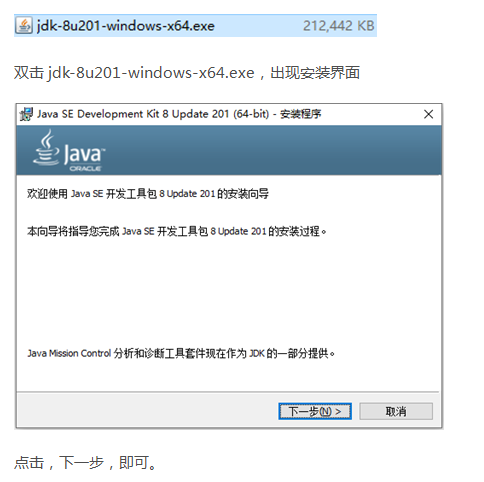How are REST APIs versioned?
How are REST APIs versioned?
Posted on March 12, 2012, Modified on September 15, 2014
I am currently working on a REST API, and the question was raised, how are, and how should, REST APIs be versioned? Here are the results of my research.
It seems that there are a number of people recommending using Content-Negotiation (the HTTP “Accept:” header) for API versioning. However, none of the big public REST APIs I have looked at seem to be using this approach. They almost exclusively put the API version number in the URI, with the odd exception using a custom HTTP header. I am at somewhat of a loss to explain this disconnect.
Versioning strategies in discussions
| POST | VERSIONING | |
|---|---|---|
| Stack Overflow 1 | URI | |
| Stack Overflow 2 | Content Negotiation | |
| blog post by Jeremy | Content Negotiation | |
| ycombinator discussion | some opinions both ways | |
| Stack Overflow 3 | Content Negotiation | |
| Stack Overflow 4 | Content Negotiation | |
| notmessenger blog post | URI (against all headers) | |
| Peter Williams | Content Negotiation (strongly against URIs) | |
| Apigee Blog post on API versioning | URI (some discussion) | |
| Mark Nottingham REST versioning | Recommending essentially versionless extensibility with a HATEOS approach | |
| Nick Berardi on REST versioning | URI | |
| Restify | “Accept-Version” header | |
| Tom Maguire on REST versioning | Content Negotiation | |
| Nicholas Zakas on Rest Versioning | URI | |
| Steve Klabnik on Rest Versioning | Content Negotiation + HATEOS | |
| Luis Rei on Rest Versioning | Content Negotiation with (;version=1.0) | |
| kohana forum discussion on REST versioning | Many Opinions | |
| Troy Hunt on REST versioning | Accept Header but also support custom header and URL | |
| Paul Gear REST versioning | Recommending essentially versionless extensibility with a HATEOS approach |
Versioning strategies in popular REST APIs
| API NAME | VERSIONING | EXAMPLE |
|---|---|---|
| Twillo | date in URI | |
| URI | ||
| Atlassian | URI | |
| Google Search | URI | |
| Github API | URI/Media Type in v3 | Intention is to remove versioning in favour of hypermedia – current application/vnd.github.v3 |
| Azure | Custom Header | x-ms-version: 2011-08-18 |
| URI/optional versioning | graph.facebook.com/v1.0/me | |
| Bing Maps | URI | |
| Google maps | unknown/strange | |
| Netflix | URI parameter | http://api.netflix.com/catalog/titles/series/70023522?v=1.5 |
| Salesforce | URI with version introspection | { “label”:”Winter ’10” “version”:”20.0″, “url”:”/services/data/v20.0″, } |
| Google data API (youtube/spreadsheets/others) | URI parameter or custom header | “GData-Version: X.0″ or “v=X.0″ |
| Flickr | No versioning? | |
| Digg | URI | http://services.digg.com/2.0/comment.bury |
| Delicious | URI | https://api.del.icio.us/v1/posts/update |
| Last FM | URI | http://ws.audioscrobbler.com/2.0/ |
| URI | http://api.linkedin.com/v1/people/~/connections | |
| Foursquare | URI | https://api.foursquare.com/v2/venues/40a55d80f964a52020f31ee3?oauth_token=XXX&v=YYYYMMDD |
| Freebase | URI | https://www.googleapis.com/freebase/v1/search?query=nirvana&indent=true |
| paypal | parameter | &VERSION=XX.0 |
| Twitpic | URI | http://api.twitpic.com/2/upload.format |
| Etsy | URI | http://openapi.etsy.com/v2 |
| Tropo | URI | https://api.tropo.com/1.0/sessions |
| Tumblr | URI | api.tumblr.com/v2/user/ |
| openstreetmap | URI and response body | http://server/api/0.6/changeset/create |
| Ebay | URI (I think) | http://open.api.ebay.com/shopping?version=713 |
| No versioning? | ||
| Groupon | URI | http://api.groupon.com/v2/channels//deals{.json|.xml} |
| Geonames | ||
| Wikipedia | no versioning I think? | |
| Bitly | URI | https://api-ssl.bitly.com/v3/shorten |
| Disqus | URI | https://disqus.com/api/3.0/posts/remove.json |
| Yammer | URI | /api/v1 |
| Drop Box | URI | https://api.dropbox.com/1/oauth/request_token |
| Amazon Simple Queue Service (Soap) | URI Parameter and WSDL URI | &Version=2011-10-01 |
| Youtube data API versioning | URI | https://www.googleapis.com/youtube/v3 |
Versioning strategies in popular REST Libraries
| LIBRARY NAME | VERSIONING | EXAMPLE |
|---|---|---|
| node-restify | semver versioning in an accept-Version header | accept-version: ~3 |
| Jersey | description of how to do Accept: header versioning in Jersey | Accept: application/vnd.musicstore-v1+json |
SHARE THIS:
- Share on Facebook
- Click to share on Google+
- Click to share on Twitter
- Click to print
- More
No related posts.
This entry was posted in Uncategorized by Tim Wood. Bookmark the permalink.
23 THOUGHTS ON “HOW ARE REST APIS VERSIONED?”
Larry on April 16, 2012 at 7:50 pm said:
The version of GitHub’s API that you link to is deprecated. The new version v3 does its versioning via content negotiation whereas the old one had it in the URI. The new approach is documented here: http://developer.github.com/v3/mime/
BTW, I found this very useful. Thanks!
Reply ↓
- Pingback: How are REST APIs versioned? | Lexical Scope | nodeJS and Web APIs | Scoop.it
- Pingback: How are REST APIs versioned? | Lexical Scope | Modern web development | Scoop.it
- Pingback: How are REST APIs versioned?
John (@strife25) on November 15, 2012 at 2:57 pm said:
Great list! I’ve also found the following article to be useful for API versioning strategies: http://blog.apigee.com/detail/restful_api_design_tips_for_versioning/
Reply ↓
- Pingback: REST Fundamentals | planetgeek.ch
Mizuki Oshiro on November 27, 2012 at 12:53 pm said:
This is usually due to header-mangling and stripping. Mobile ISPs, proxy servers, some regular ISPs – they actually strip out headers from HTTP requests. So while content negotiation is a principally sound and proper way to do it, the realities of the world we live in require putting the version in the URI.
Reply ↓
Tim Woodon November 29, 2012 at 12:41 pm said:
Do you think it also has anything to do with people wanting to browse REST services in an ordinary web browser? I wondered if the difficultly of configuring the content-negotiation in most web-browsers might contribute to this.
Reply ↓
Ionuț Tiberiu Stanon May 17, 2013 at 1:22 pm said:
Think about API requests from JS (end user browser).
Reply ↓
Tim Woodon May 17, 2013 at 1:49 pm said:
I’m not sure I follow you. Are you saying it is easier to do it one way or the other from JS?
Reply ↓
- Pingback: Revealing KijiREST: Resources | Kiji Community - Build Real-Time Scalable Data Applications on Apache HBase
abhishek on June 12, 2013 at 6:52 am said:
another reason why URI based versioning isnt right…
http://bit.ly/14Vr4jc
http://abhishek.pamecha.me/blogs/versioning-in-web-services/
Reply ↓
David Roncancio on June 21, 2013 at 5:13 pm said:
I think another reason is an implementation reason, because its easier and cleaner to have some web server work as a proxy to take /v1/ -> v1 service implementation instead of handling it in the service itself with a buch of ifs, like if(version==1) -> v1 of the service implementation
Reply ↓
- Pingback: REST Fundamentals | bbv Blog
Owen Rubel on March 13, 2014 at 2:11 am said:
Dont get bogged down by purists. Do what is simple, scalable and practical. Just because it may not fit a spec doesn’t mean it’s not better for your needs or your clients needs. After all, the biggest API users are using URI after all and they serve MILLIONs a day
Reply ↓
Ricardo Ruiz López on March 17, 2014 at 12:36 pm said:
Hello!
When an API is obsoleted, what do you do normally when you want to block an older version? What mechanism do you use?
Thanks.Reply ↓
Fred Flintstoneon August 2, 2014 at 2:44 am said:
you are talking about deprecation and you need to version both the api form and the api function; in other words, you need to do versioning on the api application as well as on the apiObject that establishes how the api request/response is handled for each related uri.
Reply ↓
- Pingback: Decoupling API Versions From Codebase Versions | Haddad’s Journal
Owen Rubel on June 25, 2014 at 3:30 am said:
Found out after much reading that there is a good reason not to do versioning in header. forwards will not send header information properly and so it will often get lost. This is why alot of people after evaluation have stayed with versioning in the URI
Reply ↓
BeosFreakon May 15, 2015 at 1:24 pm said:
If that is the case then the forward is not being performed correctly. You would lose authorization, language, media types, etc.. Version belongs in the accept header. i.e. I accept this media type and this version.
Reply ↓
- Pingback: El mekki anouar | API Versioning – Different Approaches to API Versioning (1)
- Pingback: RESTful APIs | LibreNMS development blog
- Pingback: Designer une API REST | OCTO talks !



































还没有评论,来说两句吧...